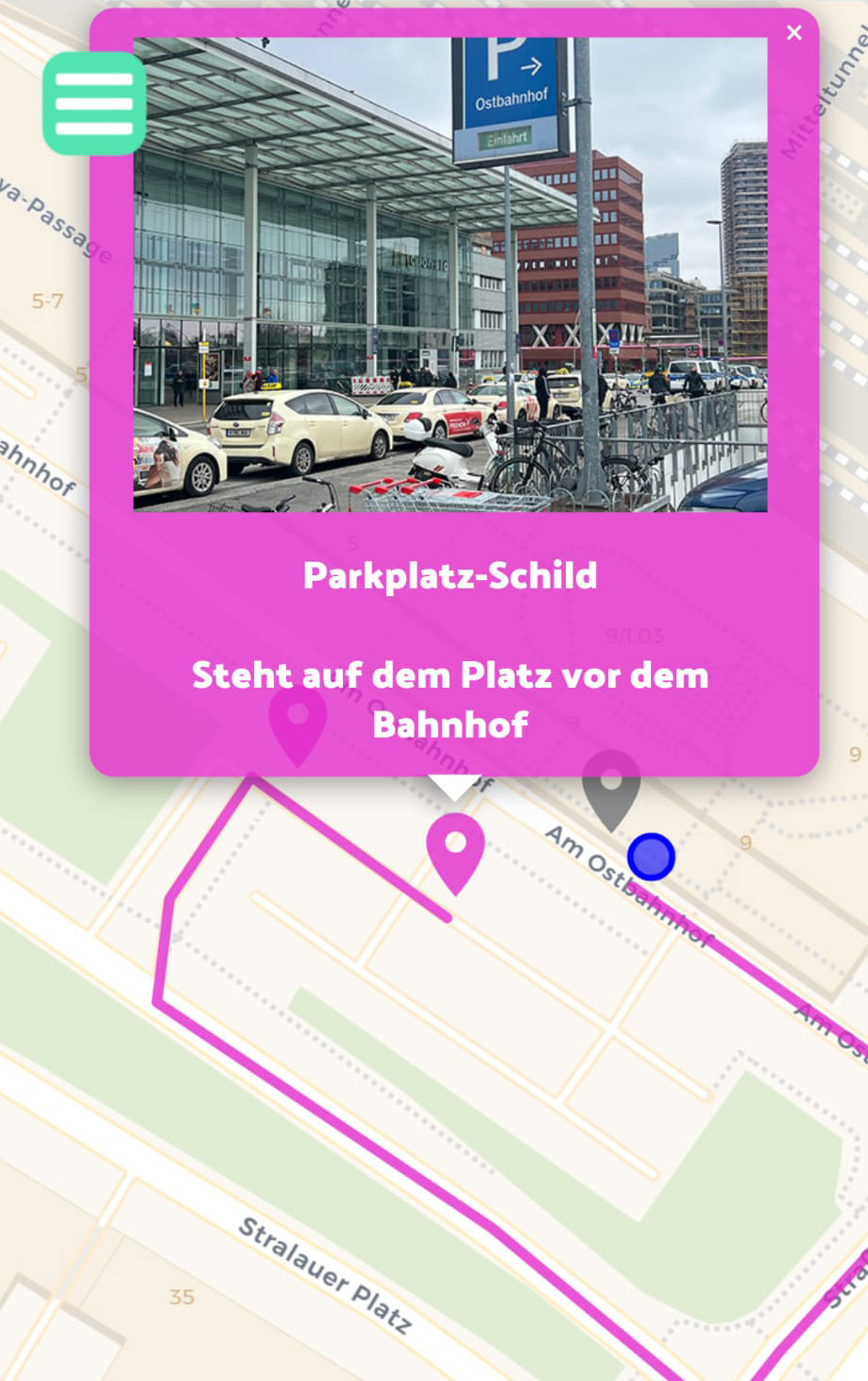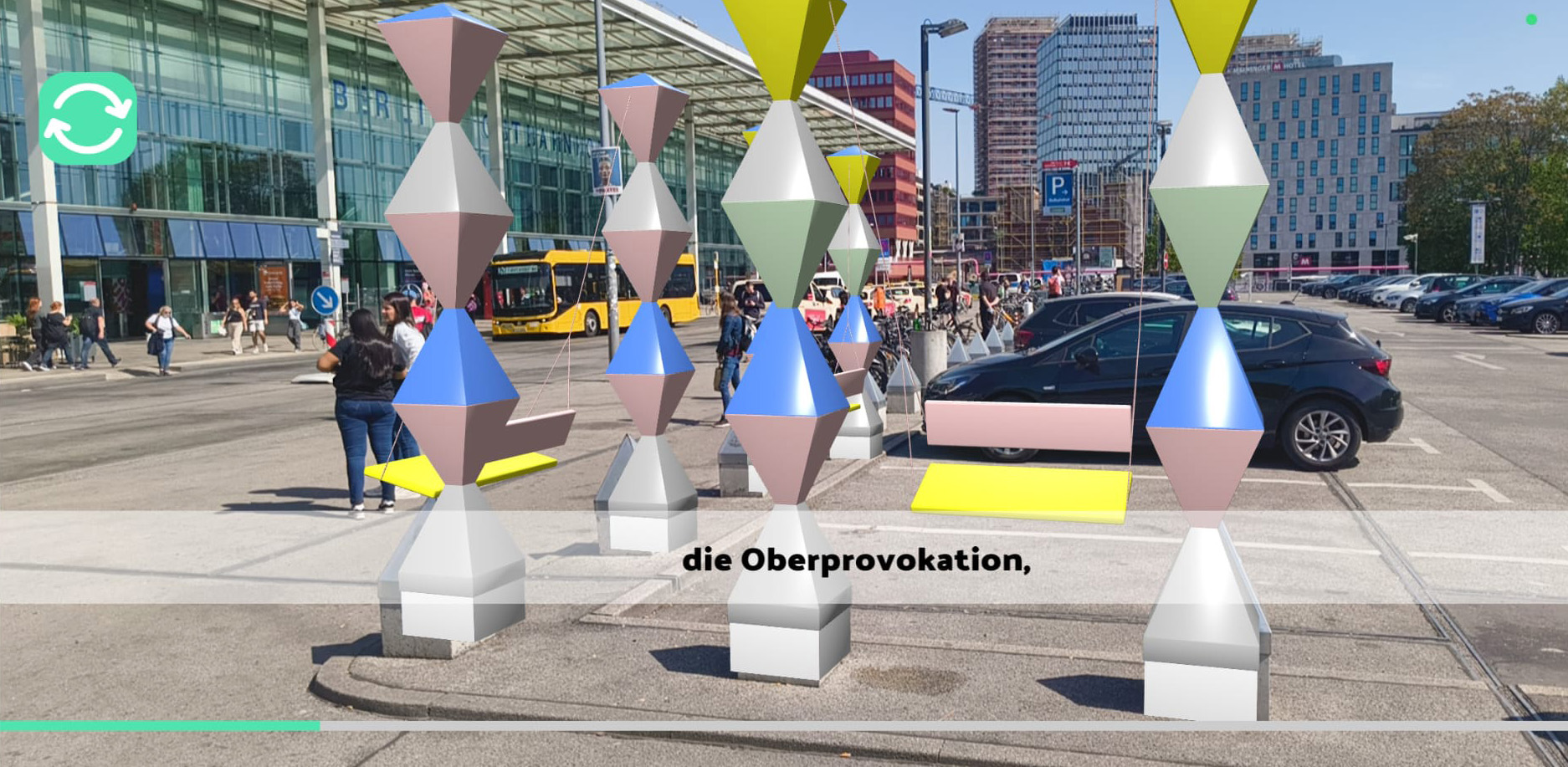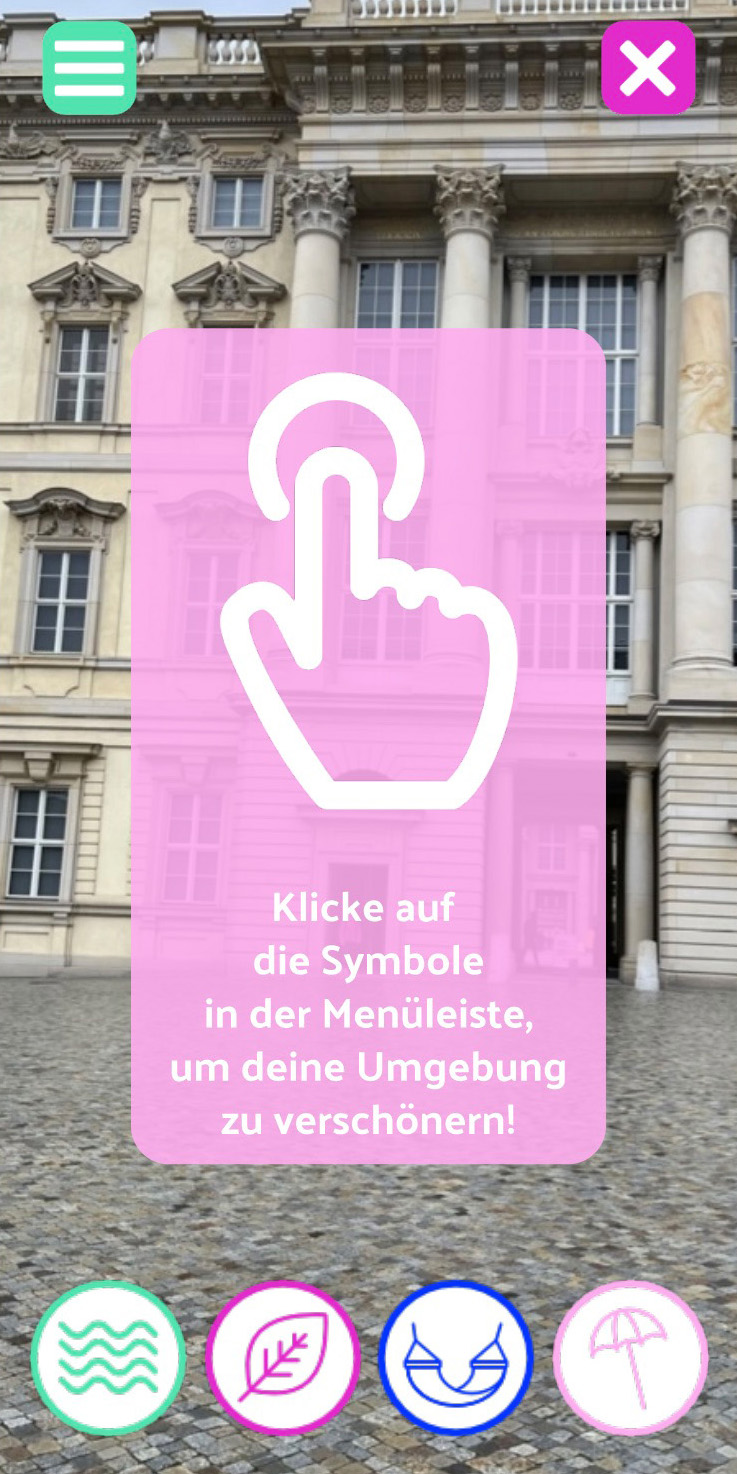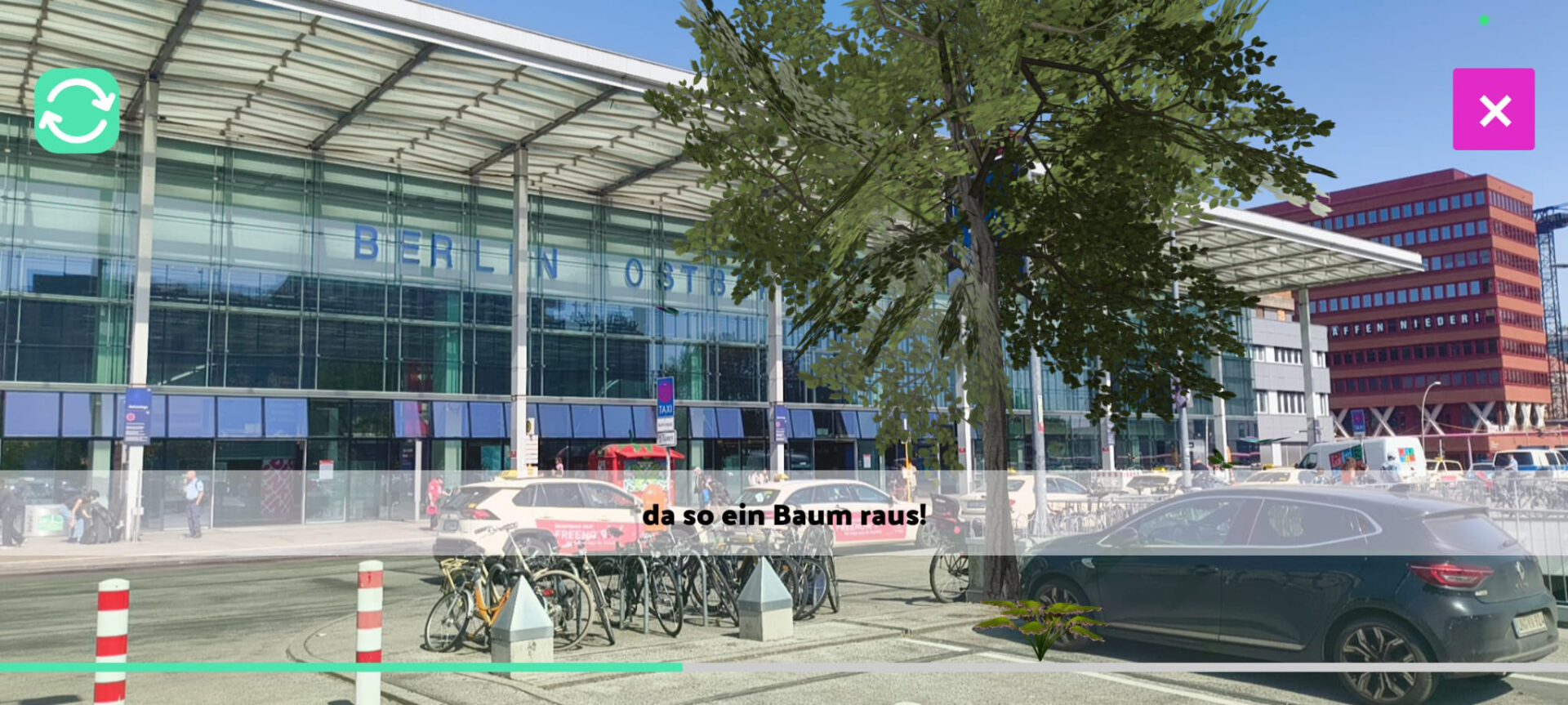Using Augmented Reality Technology to Visualize Utopia of Friendly Urban Spaces
Collaboration with Artistic Fellow Martin Binder, 2023-24.
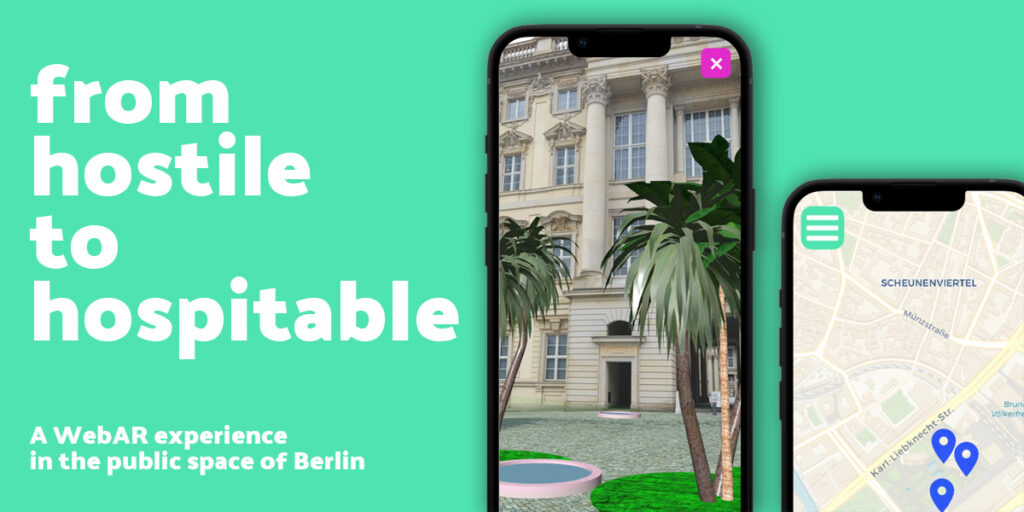
Who makes decisions about urban space and whose interests are represented? Who determines the public’s right of use? How do consumer-oriented interests influence urban planning? What does public space say about a society and how can our cities be designed to be more people-friendly?
In public spaces, urban design and strategic construction measures are increasingly being used to displace certain groups of people and behaviors. There are various gradations: from ethically controversial nudging, in which individual behavior is to be guided by subtle impulses, to the less discreet, sometimes aggressive displacement strategies of hostile design.
Hostile design, in particular, can often be observed in Berlin. Examples of this include special armrests on benches designed to prevent people from lying on them, floor coverings that block tents from being set up and certain devices on potential seating areas, ventilation shafts or wall projections that make it impossible to linger there. Homeless people are among those affected by strategic discrimination. They belong to those sub-publics that are not represented by the so-called public interest and are considered undesirable in public urban spaces. For people who are not affected, the discriminatory motives behind the behind the respective designs are often imperceptible.
As part of the Safe&Urban project (2021), Martin Binder designed dystopian products for a fictitious street furniture company. From hostile to hospitable is a further development of his exploration of discrimination in urban public spaces. At the same time, the two projects are related to each other in opposite directions: While Safe&Urban focuses on ironically exaggerated forms of hostile design, from hostile to hospitable deals with concrete solutions and alternatives.
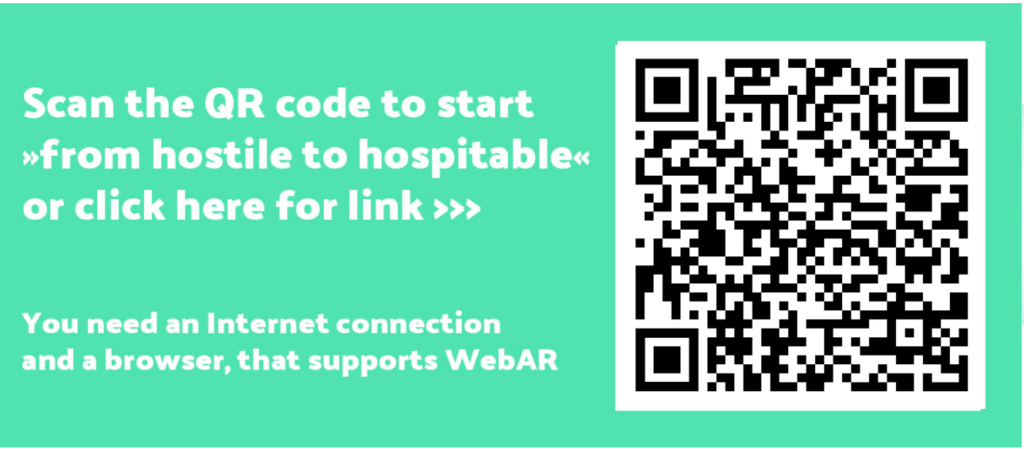


In collaboration with the interdisciplinary AR specialists of the AURORA XR School for Artists at HTW Berlin, Martin Binder developed a mobile WebAR application to draw attention to hostile architecture in Berlin’s urban space and to provide information: First, places in Berlin’s urban area that are characterised by discriminatory design are selected. With the help of AR technology, alternative counter-designs are provided: 3D models that function as a utopian antithesis in relation to the existing design.
People affected by discrimination in urban spaces as well as experts are involved in the development of the project. To this end, the artist is in contact with homeless organisations such as querstadtein e.V. and the Berliner Stadtmission.
Further information on instagram: @safeandurban
Artist’s website: https://bindermartin.com/


